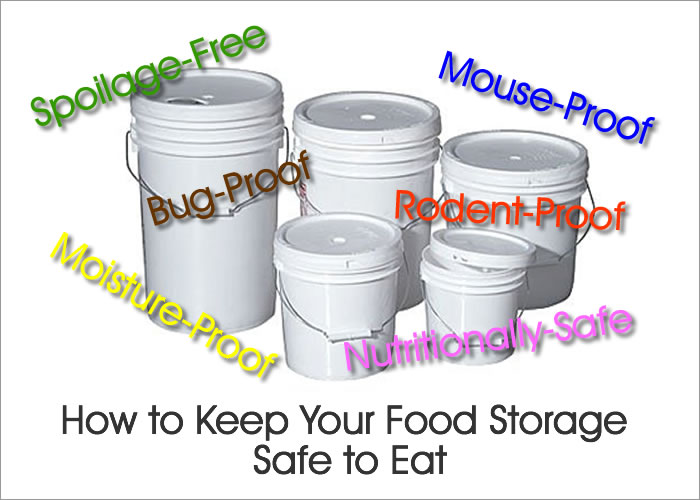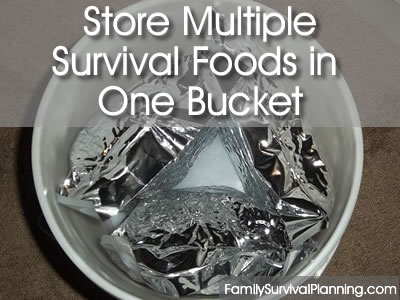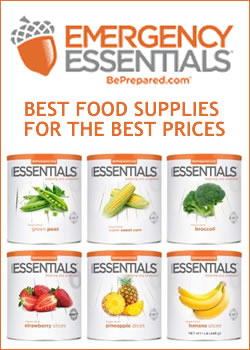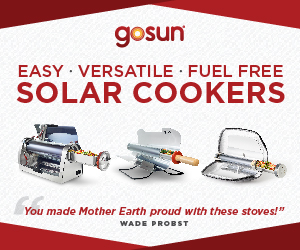- HOME
- Food Storage Guidelines
- Food Storage Containers
How to Pack Your Own Bulk Food
in Buckets and Containers
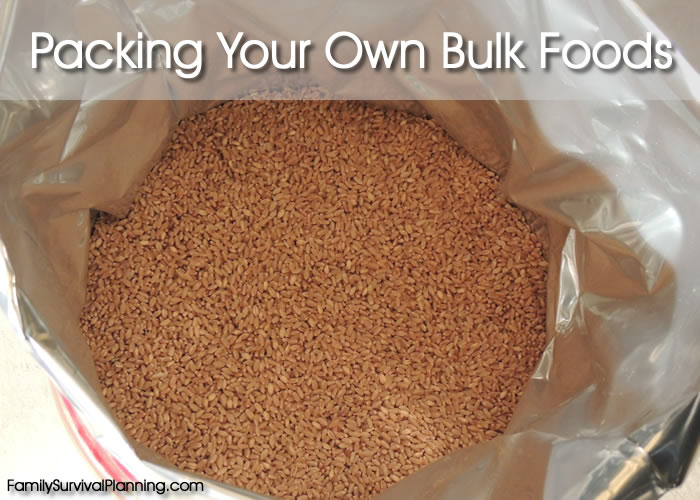
Packing your own wheat, rice, oats or other grains and food products can save you money. It is necessary to use food storage containers that are specifically for food. For instance, the blue buckets at Lowe's are not designed for food products.
Invest in emergency food storage now and enjoy peace of mind for the next 25 years. Don't miss out on the savings!
You can purchase grains in 50 pound paper sacks and then pack into your own buckets. But never leave the food in the sacks even though I have read that it will be fine for about a year. I have seen literally tons of food thrown away because they were left in sacks in someone's basement where they became highly susceptible to moisture, insects, and rodents. Keeping your food storage safe and edible is just as important as acquiring it.
If you are using plastic buckets, it's best to use food grade Metalized Foil Bucket Liners (Mylar) inside. Using oxygen absorbers will eliminate air and lengthen the storage time.
Never use trash can liners as these are treated with pesticides.
Watch this video for easy-to-follow instructions on how to pack your bulk food storage containers and seal the foil bucket liners to achieve the best results.
Watch this video for detailed instructions:
Packing Several Food Types in One Bucket
This video shows you how to pack one bucket with several food types so that you can use and rotate your storage without opening several sealed buckets. Excellent idea!
What kinds of containers can I use?
With a large variety of containers, what you use will depend on how much of each item you have to store and the type of food. Only food-grade, airtight, moisture-proof, puncture-proof containers are acceptable for storing food. Not all the container options below can be sealed or are air tight. These can be used, but must be rotated within about three to six months. Use them in your pantry supplies. Quart jars can be sealed with a FoodSaver or similar type sealer.
Container Options
- Quart jars with lids
- Gallon jars with lids - glass or plastic
- No. 10 cans (must be sealed from the supplier or use a commercial sealer and seal them yourself)
- Coffee cans/ shortening cans with lids
- Canisters with tight-fitting lids
- Medium to large plastic buckets with lids (Use only food grade buckets which should have HDP2 on the bottom.)
- Plastic containers such as Tupperware, Rubbermaid, etc.
This chart will help you calculate the approximate number of bulk food storage containers you will need. |
|
ITEM |
# of 6-Gal. Buckets/Containers Needed per 50 lbs. Purchased |
Rolled oats |
2 |
Wheat, whole grains |
1-1/2 |
Lentils |
1-1/2 |
Beans, peas |
1-1/2 |
Soup mix, dry |
1-1/2 |
Macaroni |
1-1/2 |
Noodles |
6 |
Flour |
2 |
Sugar |
2 |
Optimal Canned & Dry Food Storage Conditions:
Cool
35° to 70°
(cooler is better)
Dry
50% to 70% humidity
You may store food in less-than-optimum conditions, but it must be used sooner.
If you live in an earthquake-prone area, don't stack buckets too high as they may topple, the lids pop open, or they may crack. A good, safe container is the #10 metal can which most preparedness companies use when they package their foods. They would probably survive a tumble with no more than a dent or two.
There are food storage rotation shelves for containers of every size. Some sit on your shelves and others are the full shelves — floor to ceiling.
After deciding what type of bulk food to store, hopefully the information here will help you choose the sizes and types of food storage containers for your needs.

